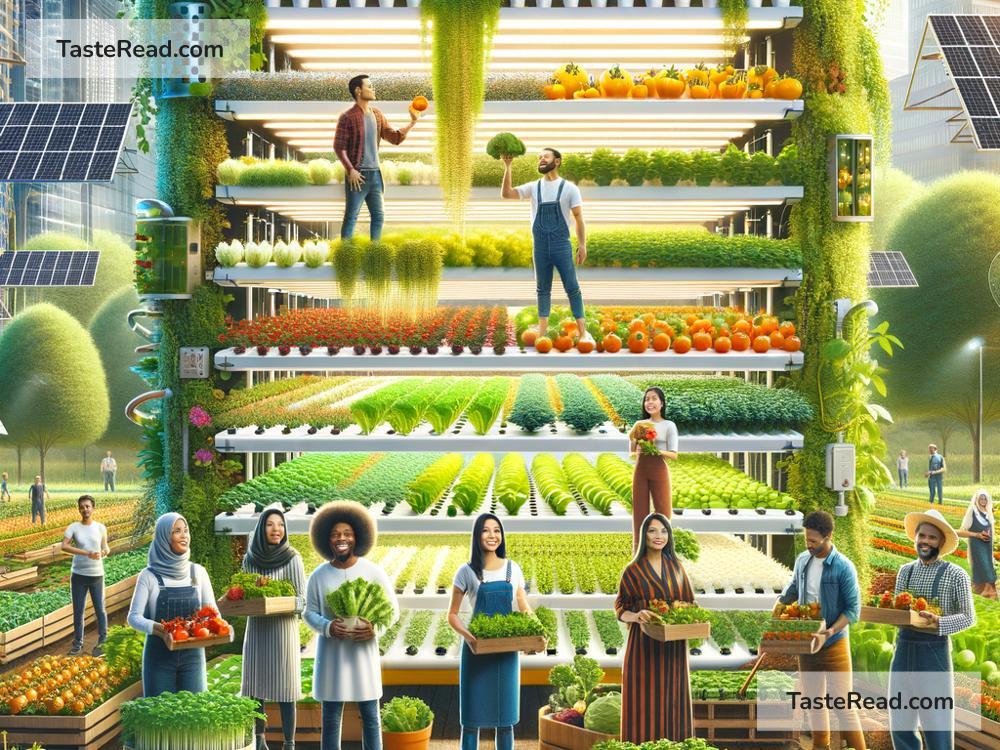The Future of Food and Environmental Justice
Across the globe, people are waking up to the importance of what we eat and how it impacts our planet. Food isn’t just what fills our plates; it’s deeply connected to our health, the environment, and the lives of millions of farmers and workers. However, as climate change reshapes the Earth and inequality persists, the future of food faces many challenges. At the heart of this challenge is the idea of environmental justice. Let’s explore how food systems can become fairer and more sustainable while protecting our planet.
What Is Environmental Justice?
Environmental justice means ensuring that everyone, no matter their race, income, or location, can enjoy a clean and safe environment. Historically, low-income communities and communities of color have faced greater environmental harm. Factories, chemical plants, and farms that pollute often end up near these neighborhoods, exposing people to toxins that harm their health. At the same time, these same communities often lack access to healthy, affordable food. Food deserts—areas with little access to fresh fruits and vegetables—are a common problem. Environmental justice fights to change this unfair system.
How Climate Change Is Changing Food
As the climate warms, growing food is becoming harder. Droughts, floods, and severe weather are damaging crops around the world. Farmers are struggling to predict seasons, which makes planting and harvesting more difficult. As a result, food prices go up, hurting low-income families. In some parts of the world, rising temperatures are making traditional farming methods impossible, which could lead to food shortages.
One major concern is the loss of biodiversity. Many plants and animals we rely on for food are struggling to survive as their ecosystems change. For example, bees and other pollinators are dying at alarming rates, which threatens crops like apples, almonds, and coffee. If we want to secure the future of food, protecting the environment must be a priority.
Building Sustainable Food Systems
Sustainability is key to feeding the world without destroying the planet. Sustainable food systems focus on producing enough food while protecting natural resources, reducing waste, and lowering greenhouse gas emissions. Here are some ways we can make food systems more sustainable:
-
Regenerative Agriculture: Farmers are adopting practices like planting cover crops, reducing chemical use, and rotating crops to improve soil health. Healthy soil captures more carbon from the air and produces better crops.
-
Plant-Based Eating: Eating less meat can significantly reduce greenhouse gas emissions. Livestock farming requires a lot of land, water, and energy, and it produces high levels of pollution. Many experts encourage eating more vegetables, grains, and legumes for both health and environmental reasons.
-
Reducing Food Waste: About one-third of all food produced globally is wasted. Cutting down on waste—whether it’s at farms, stores, or in our homes—can help ensure resources aren’t used for food that goes uneaten.
-
Local and Urban Farming: Supporting local farmers or even growing your own food in small spaces like gardens or rooftops reduces the need for food to travel long distances, saving energy and reducing pollution.
The Role of Technology in Food’s Future
Technology is playing a big role in shaping the future of food. Innovations like vertical farming, lab-grown meat, and precision agriculture are helping farmers grow food more efficiently. Vertical farming involves growing plants indoors in small spaces, stacked like shelves. Lab-grown meat is made in laboratories using animal cells, which could one day decrease the demand for traditional livestock farming. Precision agriculture technologies, like drones and sensors, help farmers use water and fertilizers more carefully, reducing waste and pollution.
However, technology is not a one-size-fits-all solution. Small-scale farmers, especially in developing countries, often can’t afford expensive equipment. To ensure environmental justice, governments and organizations must work to make these innovations accessible to all farmers, not just wealthy ones.
Food and Social Equity
Making food systems fairer is essential. Today, many people—especially those in marginalized communities—struggle to afford nutritious food. At the same time, farm workers often earn low wages and work in hazardous conditions. Environmental justice means protecting both consumers and workers.
Several movements are working to address these inequalities. For example, “food sovereignty” advocates for communities to control their own food systems, supporting local farmers and traditional growing methods. Programs that provide subsidies for healthy foods and community gardens can also help families living in food deserts access better options.
What Can We Do?
The future of food depends on all of us. Here are small but impactful steps you can take to support sustainable and fair food systems:
- Choose Local and Seasonal Foods: When possible, buy food that is grown locally and is in season. This reduces carbon emissions and supports local farmers.
- Eat More Plants: You don’t have to give up meat entirely, but reducing it in your diet can help the planet.
- Cut Down on Food Waste: Plan your meals, store food properly, and get creative with leftovers.
- Support Fair Trade: Look for products that are labeled “fair trade,” which ensures workers receive fair pay and work in safe conditions.
Conclusion
The future of food is tied to the health of the planet and the fairness of our society. We need food systems that nourish people while protecting the Earth—not just for today, but for generations to come. By supporting sustainable practices and fighting for environmental justice, we can make sure everyone has access to nutritious food without harming the world we all share. Together, we have the power to shape a future where food, fairness, and sustainability go hand in hand.


